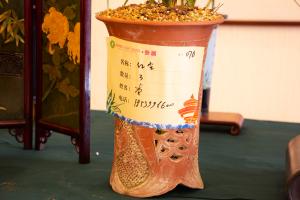Introduction
Ash trees have been a popular choice for landscaping and as a source of wood for centuries. However, over the past few decades, they have been threatened by a series of diseases and pests, particularly the Emerald Ash Borer (EAB). This has led to concerns about the safety and feasibility of planting new ash trees. This article aims to explore the question of whether it is safe to plant ash trees or not.
The Risks of Planting Ash Trees
The main risk associated with planting ash trees is the potential for them to become infected with EAB. This beetle is a native to Asia and was first discovered in Michigan in 2002. Since then, it has spread across the United States and Canada, killing tens of millions of ash trees. EAB larvae feed on the inner bark of ash trees, disrupting the flow of water and nutrients, leading to the death of the tree.
Aside from EAB, there are other diseases and pests that can affect ash trees, including ash yellows, ash rust, and ash dieback. These diseases can cause leaf yellowing, premature leaf loss, and branch dieback, leading to the eventual death of the tree.
Management Strategies
Despite the risks associated with planting ash trees, there are management strategies that can be employed to reduce the chances of infection or to mitigate the severity of an outbreak. One approach is to plant ash trees that are less susceptible to EAB, such as cultivars that have been bred for resistance. Another option is to treat existing trees with insecticides to control EAB populations.
The most effective strategy, however, is to diversify planting schemes and not rely solely on ash as a landscaping tree. By planting a variety of tree species, the risk of a catastrophic loss due to disease or pests is greatly reduced.
Benefits of Ash Trees
Despite the risks, there are still compelling reasons to plant ash trees. They are a long-lived and iconic species, providing shade, beauty, and other environmental benefits. Ash trees are also an important source of wood products, such as baseball bats, furniture, and flooring, with a distinctive grain and color that make them desirable to many consumers.
Furthermore, ash trees can play an important role in ecological restoration efforts. In some areas, they are a critical component of the natural ecosystem, providing habitat and food for a range of wildlife, including birds, insects, and mammals.
Conclusion
In conclusion, planting ash trees is not without risks, particularly in areas where EAB is prevalent. However, with careful planning and management, these risks can be minimized. By diversifying planting schemes and employing other strategies, it is possible to enjoy the benefits of planting ash trees while minimizing the potential impact of diseases and pests. More research and monitoring are needed to fully understand the risks and benefits of ash trees and to develop effective management strategies.

 how many times do yo...
how many times do yo... how many planted tre...
how many planted tre... how many pine trees ...
how many pine trees ... how many pecan trees...
how many pecan trees... how many plants comp...
how many plants comp... how many plants can ...
how many plants can ... how many plants and ...
how many plants and ... how many pepper plan...
how many pepper plan...
































